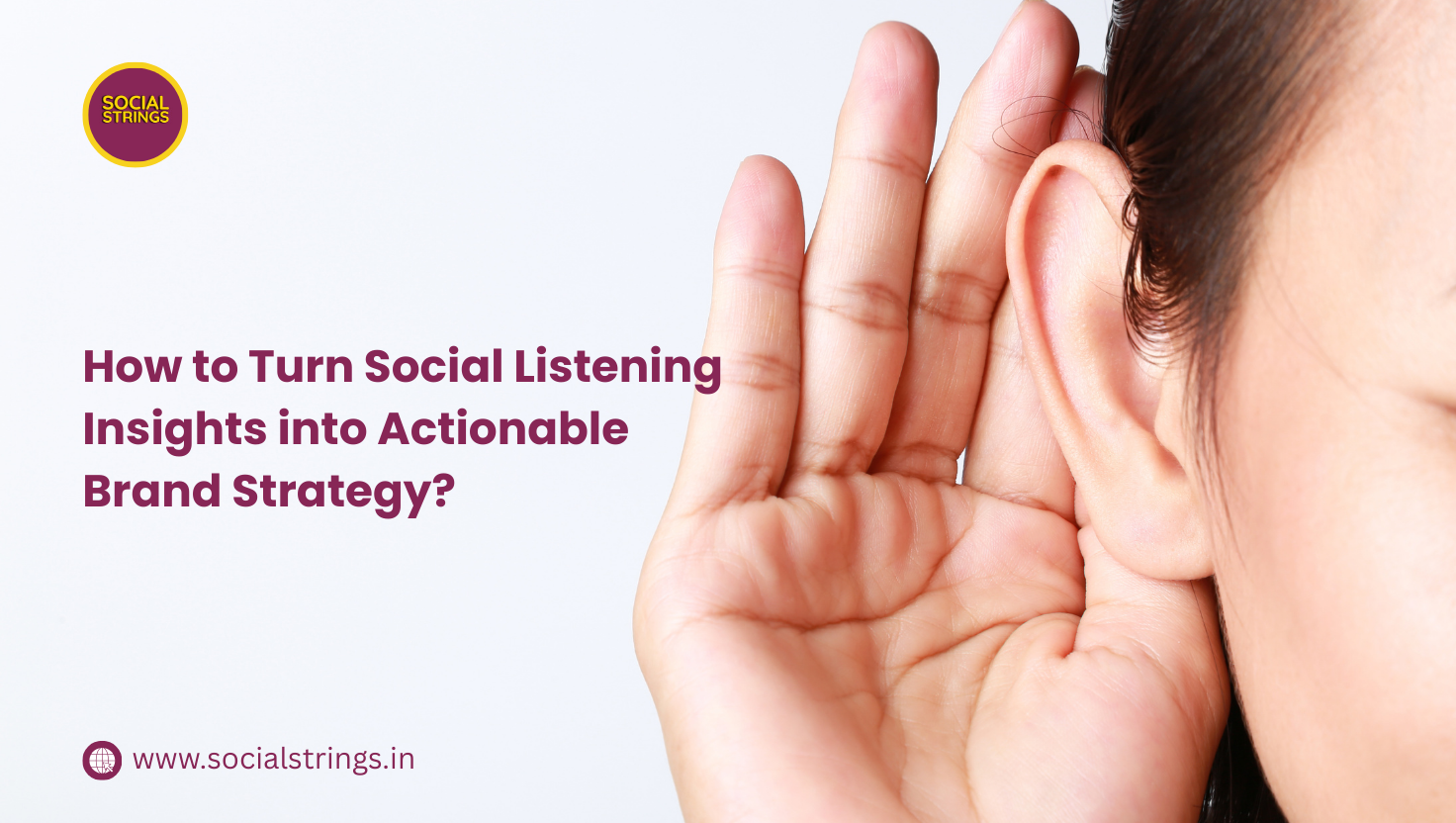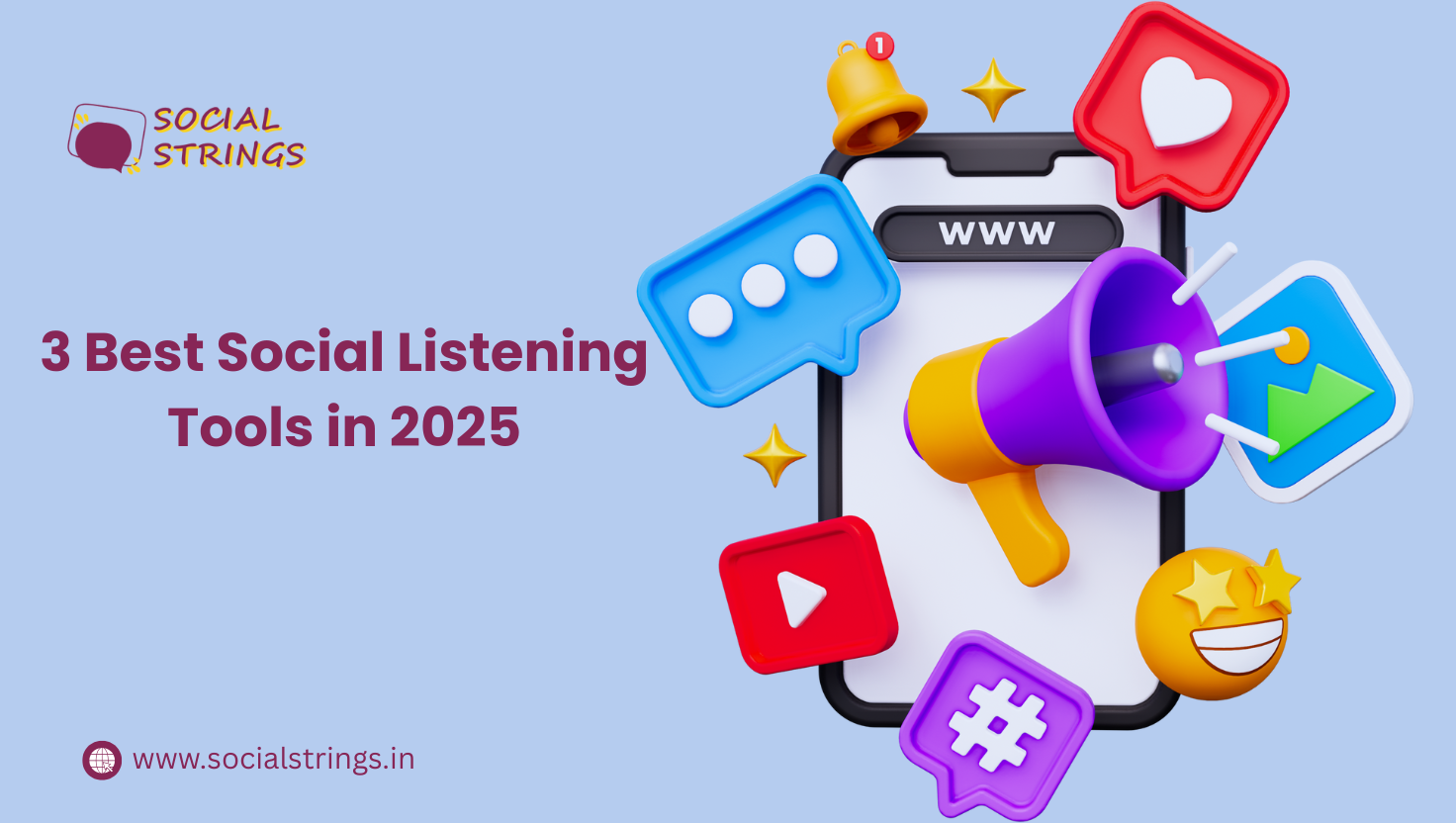When it comes to making smart choices, social listening plays a crucial role — both for individuals and brands.
Imagine you’re planning to buy the latest iPhone 16 Pro Max. Would you walk into a store and purchase it immediately? Most likely not. You would first check online reviews, watch comparison videos, and ask for recommendations before making a decision.
Similarly, as a brand, understanding your consumers requires social listening — tracking and analyzing online conversations to know what your audience truly thinks and feels.
Let’s dive into why social listening is essential for every brand today.
What is Social Listening?
Social Listening is the process of tracking online conversations across social media, blogs, forums, and review platforms to understand consumer sentiment, identify trends, and gain valuable insights. It’s more than just monitoring brand mentions; it involves analyzing consumer discussions to make data-driven business decisions.
Benefits of Social Listening
- Identify customer needs, preferences, and concerns.
- Track sentiment trends – whether opinions are positive, negative, or neutral.
- Discover emerging market trends and industry shifts.
- Monitor competitor strategies and customer perceptions.
- Improve customer engagement and refine marketing strategies.

But how do you turn these insights into actionable strategies? Let’s break it down.
Step 1: Identify Key Insights
Start by tracking brand mentions, keywords, and hashtags relevant to your business. Pay attention to:
- Consumer Pain Points: What are customers complaining about?
- Positive Feedback: What are they loving about your brand?
- Industry Trends: What’s buzzing in your industry?
- Competitor Analysis: What’s being said about your competitors?
Tools for Social Listening:
🔹 Sprout Social
🔹 Brandwatch
🔹 Hootsuite
🔹 Meltwater
🔹 Konnect Insights
🔹 Google Alerts
Step 2: Analyze Consumer Sentiment
Sentiment analysis helps you determine whether online conversations about your brand are positive, negative, or neutral. By understanding the tone of the conversation, you can:
- Address negative feedback proactively
- Enhance positive experiences to foster brand loyalty
- Identify areas where customer expectations are unmet
Step 3: Apply Insights to Your Brand Strategy
Once you have the data, it’s time to act. Here’s how you can integrate social listening insights into your strategy:
1. Product & Service Improvement
Example: If multiple customers complain about a feature in your app, consider updating it based on their feedback.
2. Content & Campaign Strategy
Example: If a specific topic is trending in your industry, create content around it to stay relevant.
3. Customer Engagement & Crisis Management
Example: If a customer posts a negative review, respond promptly and offer a solution. This builds trust and brand credibility.
4. Competitive Benchmarking
Example: If your competitor is praised for fast customer service, analyze how you can improve yours to stay competitive.
Step 4: Measure the Impact
Track key performance indicators (KPIs) such as:
- Increase in positive brand mentions
- Growth in customer engagement (likes, shares, comments)
- Reduction in negative sentiment over time
- Higher conversion rates from social campaigns
Common Mistakes to Avoid in Social Listening
While social listening can be a game-changer, brands often make some common mistakes that limit its effectiveness:
1. Ignoring Indirect Mentions:
Not every customer will tag your brand directly. Tracking untagged mentions and related keywords is crucial.
2. Focusing Only on Numbers:
It’s not just about how many mentions you get — it’s about what people are saying and feeling. Qualitative analysis matters just as much as quantitative.
3. Lack of Timely Action:
Collecting data is useless if you don’t act quickly. Social listening should be paired with fast, responsive strategies.
4. Treating It as a One-Time Activity:
Consumer sentiments evolve constantly. Social listening must be an ongoing process, not a one-time project.
By avoiding these mistakes, you can unlock the full potential of social listening and build stronger, more authentic relationships with your customers.
How can Social Strings Help?
Social Listening is not just about collecting data—it’s about transforming insights into action. By actively monitoring online conversations, brands can refine their marketing strategies, enhance customer experiences, and maintain a competitive edge in the market.
Are you ready to turn your social listening insights into a winning brand strategy? Start today, and let your customers shape the future of your brand! Get in touch with Social Strings NOW!
Reference





